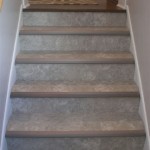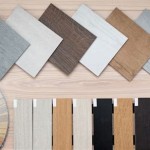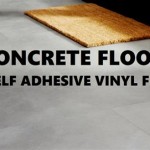What to Put Down on a Concrete Basement Floor
A concrete basement floor is a solid foundation for your home, but it can also be a cold, hard, and uninviting surface. To make your basement more comfortable and functional, you'll need to decide what to put down on top of the concrete. This decision will depend on your budget, desired aesthetic, and intended use for the space. There are numerous options available, ranging from simple and affordable coverings to more luxurious and complex installations. This article will explore some common choices for basement flooring, providing insights into their benefits and drawbacks.
1. Paint
Painting a concrete basement floor is an inexpensive and quick way to refresh its appearance. Concrete paint comes in a variety of colors and finishes, allowing you to customize the look of your basement. It also provides a protective barrier against moisture and stains. However, paint can be prone to chipping and cracking over time, especially in high-traffic areas. Additionally, it can create a slippery surface if not properly sealed.
For a more durable and visually appealing option, consider using epoxy paint. Epoxy paint forms a hard, glossy coating that is resistant to scratches, abrasion, and chemicals. It comes in various colors and can be applied to create a smooth, uniform surface. While epoxy paint is more expensive than regular concrete paint, its durability and aesthetic appeal make it a worthwhile investment for high-traffic basements or areas subject to spills and stains.
2. Tile
Tile is a popular choice for basement floors due to its durability, moisture resistance, and versatility. Ceramic tile, porcelain tile, and natural stone are all suitable for basement applications. Ceramic tile is affordable and comes in a wide range of colors, styles, and sizes. Porcelain tile is more durable and resistant to stains, making it a good option for high-traffic areas. Natural stone, such as slate or travertine, adds a touch of elegance and sophistication to any basement. However, natural stone can be more expensive than other tile options and requires proper sealing to prevent staining and damage.
When installing tile in a basement, it is crucial to ensure proper drainage and ventilation. Tile can be susceptible to moisture damage, so it is essential to have a waterproof membrane installed beneath the tile and to avoid using tile in areas prone to flooding. Additionally, consider using a grout sealer to protect the grout lines from moisture and staining.
3. Carpet
Carpet can add warmth and comfort to a basement floor, making it more inviting for living spaces. It is available in a wide range of colors, textures, and styles, allowing you to create a unique and personalized look. However, carpet can be more challenging to clean and maintain than other flooring options, especially in a basement environment. It can be susceptible to mold and mildew growth if exposed to moisture. Additionally, consider the potential for staining, especially if the basement is used for activities that may involve spills or dirt.
To minimize the risk of moisture damage, choose a carpet with moisture-resistant backing. Consider using a carpet pad with a moisture barrier to further protect the carpet from moisture damage. Regular cleaning and proper ventilation are crucial to prevent mold and mildew growth in a carpeted basement.
4. Vinyl Plank Flooring
Vinyl plank flooring is a versatile and affordable option for basement floors. It offers the look of real wood without the expense and maintenance requirements. Vinyl planks are durable, waterproof, and easy to clean. They come in a wide range of colors and styles, mimicking different wood species and textures. Additionally, they are relatively easy to install, making them a DIY-friendly option.
Vinyl plank flooring can be a suitable choice for various basement applications, from workshops and home offices to recreation rooms and living spaces. It is a practical and stylish option that offers durability, moisture resistance, and ease of maintenance.
5. Laminate Flooring
Laminate flooring is another affordable and durable option for basement floors. It mimics the look of wood, tile, or stone, providing a variety of styles to choose from. Laminate flooring is made of layers of materials, including a wear-resistant surface layer, a decorative layer, and a core layer for stability. While it is not as water-resistant as vinyl plank flooring, it is still a good option for dry basements. However, it is important to note that laminate flooring is not as durable as tile or wood flooring and can be susceptible to scratches and dents.
Laminate flooring is a suitable option for basement spaces that are not subject to high moisture levels. It provides a stylish and cost-effective flooring solution that complements various design aesthetics.

Do This Before Laying Carpet In Your Basement

How To Install A Wood Subfloor Over Concrete Rona

How To Install Vinyl Or Laminate Floors In A Basement Over Concrete Slab

Lvp Flooring Installation Over Concrete Subfloor Full Instructional Builds By Maz Flooret

Best Budget Basement Flooring Ideas

What Is The Best Flooring For Concrete Slabs 50floor

The Best Flooring Options For Your Basement

Installing Rigid Foam Above A Concrete Slab Greenbuildingadvisor

Tips For Installing Vinyl Plank Over Concrete Floors Lemon Thistle

Painted Concrete Floors Update 3 Years Later Building Bluebird
See Also







